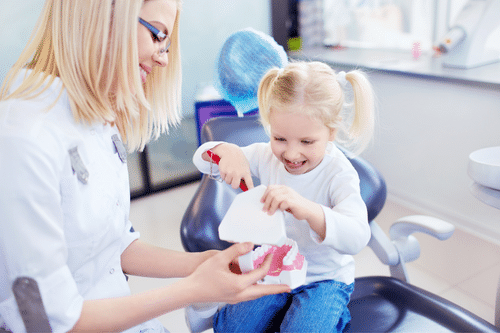
Cavities are common for everyone, including children. Many parents and guardians wonder if it’s possible to reverse tooth decay in children. In some cases, you can even reverse enamel weakening. However, an ounce of prevention is worth its weight in cavity fillings regarding dental health. Here, we discuss tooth decay, it’s common causes, and how to prevent tooth decay in children.
What Is Tooth Decay?
When you eat food, that food lingers on your teeth. As a result, bacteria in your mouth can eat the remaining food and produce acid, which breaks down the enamel on your teeth. As that acid wears holes into your teeth, more bacteria can live in said holes, leading to infections and further decay. These holes are called cavities.
Many things, including poor dental hygiene and sugary foods, can cause tooth decay. Cavities hurt when the decay reaches the root of the tooth, which includes the nerve. Thankfully, regular dental care and cleanings can help prevent tooth decay, infection, and other dental problems like gingivitis.
Why Do Kids Get Tooth Decay?
Poor dental hygiene and a diet high in sugary foods can both contribute to tooth decay. Kids can also get tooth decay because they may not brush their teeth properly. You should brush your teeth for at least two minutes and brush your teeth twice a day and after meals. Using a kid-friendly, alcohol-free mouthwash can also clean your teeth and fight cavities, as can flossing. Supervising your child when they brush their teeth and teaching them the proper way to brush can also help stave off tooth decay.
Best Treatments for Tooth Decay in Kids
Prevention is one of the best ways to treat tooth decay in kids. Ensuring your child regularly visits the dentist for cleanings and takes care of their teeth can help fight cavities and instill a lifelong appreciation of dental health. However, if your child already has cavities, several solutions exist to help remove them and restore their smile.
If your child has deep cavities, your pediatric dentist will recommend removing the decay and repairing the remaining tooth, also known as a filling. Fillings are made from resin composites or metal and replace the missing enamel destroyed by cavities. While fillings may seem scary, explain to your child that they won’t feel anything, and getting rid of the decayed tooth helps keep the rest of their tooth healthy.
If your child has cavities in their baby teeth, talk to your dentist about whether it’s worth repairing the tooth or if early extraction or even leaving the tooth alone if it’s not causing pain may be a good action. Severe cavities usually need filling. However, small cavities in baby teeth can sometimes be left alone, especially if your child is close to getting adult teeth.
At Smile First Pediatric Dentistry, we work with families to prevent and treat tooth decay in children. If you’re interested in making an appointment with our team of kid-friendly dentists, call us today at (631) 563-7462.
Source(s):
